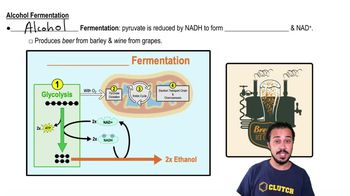Coenzymes are _______.
a. types of apoenzymes
b. proteins
c. inorganic cofactors
d. organic cofactors
 Verified step by step guidance
Verified step by step guidance


Coenzymes are _______.
a. types of apoenzymes
b. proteins
c. inorganic cofactors
d. organic cofactors
What happens to the carbon atoms in sugar catabolized by Escherichia coli?
Which of the following statements best describes ribozymes?
a. Ribozymes are proteins that aid in the production of ribosomes.
b. Ribozymes are nucleic acids that produce ribose sugars.
c. Ribozymes store enzymes in ribosomes.
d. Ribozymes process RNA molecules in eukaryotes.
Which of the following does not affect the function of enzymes?
a. ubiquinone
b. substrate concentration
c. temperature
d. competitive inhibitors
Where specifically does the most significant production of ATP occur in prokaryotic and eukaryotic cells?
Most oxidation reactions in bacteria involve the _______.
a. removal of hydrogen ions and electrons
b. removal of oxygen
c. addition of hydrogen ions and electrons
d. addition of hydrogen ions